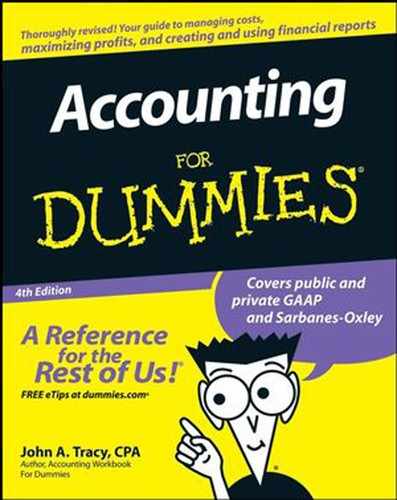4.4. Summing Up the Financial Effects of Profit
NOTE
Business managers should understand not only how to make profit, but also the financial effects of making profit. Profit does not simply mean an increase in cash. Sales revenue and expenses affect several assets other than cash and operating liabilities. I realize that I make this point several times in this chapter, so forgive me if I seem to be harping. I simply want to drive home the importance of understanding this fact.
Making profit involves additional transactions that are closely allied with sales and expenses. These tightly connected transactions include the following:
Collecting cash from customers for credit sales made to them, which takes place after recording the sales revenue
Purchasing (or manufacturing) products that are put in inventory and held there until the products are sold sometime later, at which time the cost of products sold is charged to expense in order to match up with the revenue from the sale
Paying certain costs in advance of when they are charged to expense
Paying for products bought on credit and for other items that are not charged to expense until sometime after the purchase
Paying for expenses that have been recorded sometime earlier
Making payments to the government for income tax expense that has already been recorded
These allied transactions are the "before and after" of recording sales and expense transactions. The allied transactions are not reported as such in a financial statement. However, the allied transactions change assets and liabilities, and they definitely affect cash flow. I explain how the changes in assets and liabilities caused by the allied transactions affect cash flow in Chapter 6.
Figure 4-2 is a summary of the changes in assets and liabilities during the year that are caused by a company's profit-making activities — including the sales and expense transactions (summarized in the income statement) and the allied transactions (which are not reported in a financial statement). This sort of summary is not usually prepared for business managers, nor is such a summary presented in external financial reports. But it is a useful way to sum up the financial consequences of making profit.
Figure 4.2. Summary of changes in assets and liabilities from sales, expenses, and their allied transactions during the year.

Note in Figure 4-2 that I use descriptive names for the assets and liabilities, instead of the formal account titles that you see in actual financial statements. You can refer to the formal account titles earlier in the chapter (see the section "Getting Particular about Assets and Liabilities"). When explaining the balance sheet in Chapter 5, I stick to the formal titles of the accounts.
Other transactions also change the assets, liabilities, and owners' equity of a business, such as borrowing money and buying new fixed assets. These non-revenue and non-expense transactions are reported in the statement of cash flows, which I explain in Chapter 6.
